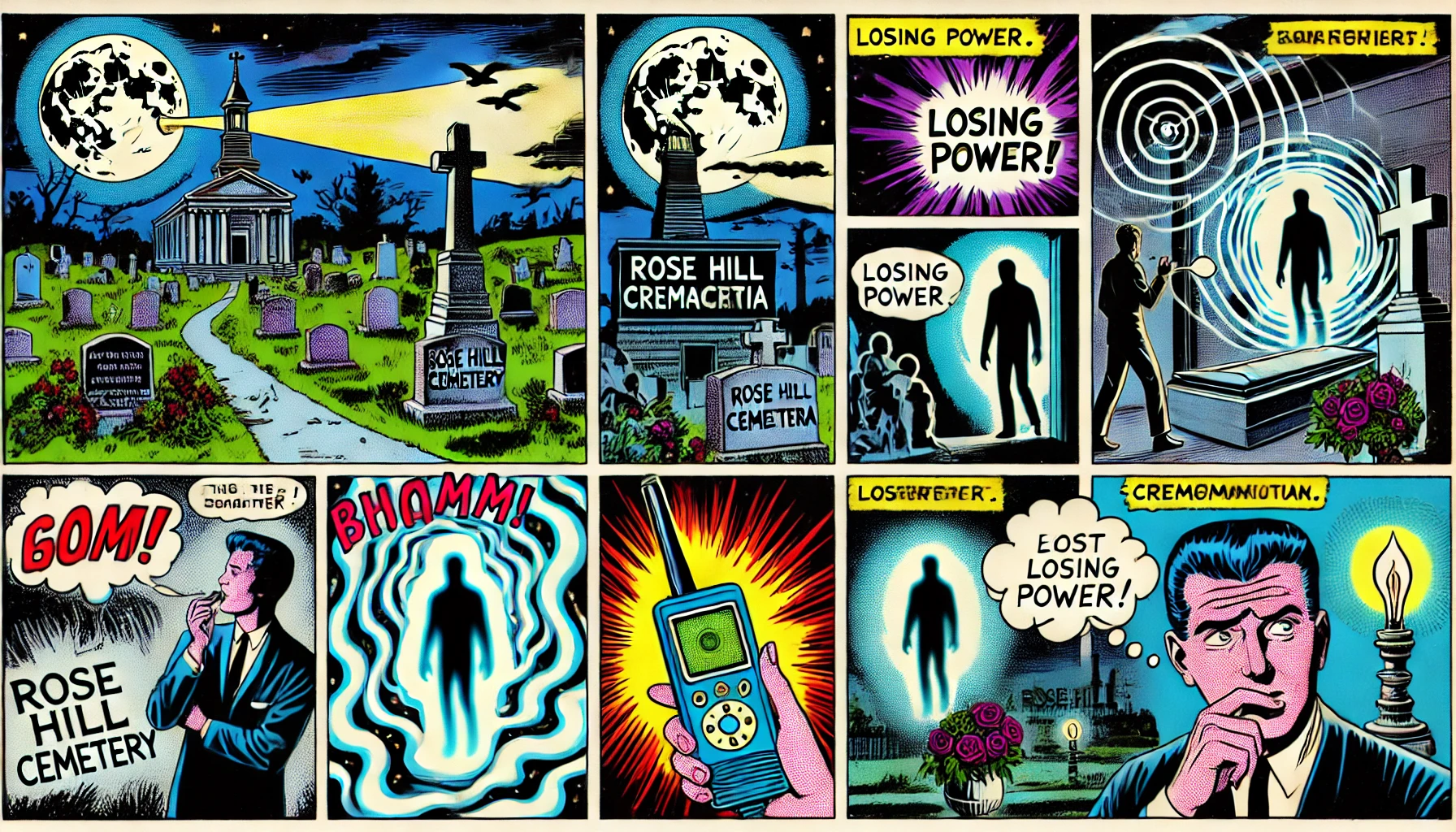Uncommon night visit to Rose Hill Cemetery Hagerstown Maryland Nov 2023
Storied tour of grounds, mausoleum. Thank you Lisa, Patti, Colleen!
Reported by man carrying remote / portable loudspeaker / amplifier for Colleen, our tour-guide with her wireless microphone —
After entering the left (north-west) sideof mausoleum, the loudspeaker reported: “You have been disconnected.” Loudspeaker had also briefly crackled and distorted at various spots during the tour; however man carrying loudspeaker and Colleen (carrying wireless microphone) never seemed ‘too far’ apart, and that was the only time the ‘error report’ was caused. The amplified loudspeaker continued working a few moments later and for the remaining hour or so of the tour.
Was this ‘error’ warning simply the result of RF comb-interference, or possibly somehow indicative of ‘power-suck’ routinely reported by para-explorers amongst numerous varied devices, batteries, etc?
BELOW: Amongst the oldest graves.
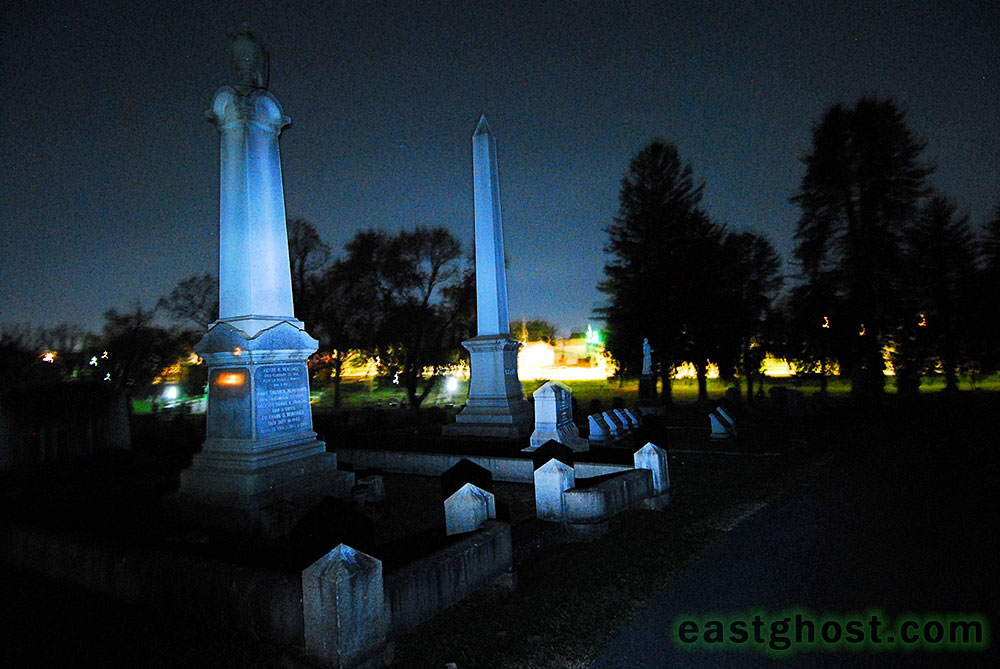
The blog post titled “Uncommon Night Visit to Rose Hill Cemetery Hagerstown Maryland Nov 2023” recounts a unique nocturnal tour of Rose Hill Cemetery in Hagerstown, Maryland, conducted in November 2023. The tour, led by individuals named Lisa, Patti, and Colleen, included a visit to the cemetery’s mausoleum. During the tour, a participant carrying a portable loudspeaker experienced technical anomalies; the device unexpectedly announced, “You have been disconnected,” and emitted brief crackles and distortions at various points. Notably, these occurrences happened even when Colleen, presumably the guide, was not far from the loudspeaker. The blog post raises the question of whether these issues were due to simple radio frequency (RF) interference or indicative of the “power-suck” phenomenon often reported by paranormal explorers.
Rose Hill Cemetery, established in 1866, is the oldest public cemetery in Washington County, Maryland, encompassing over 102 acres and serving as the final resting place for more than 43,000 individuals. The cemetery is known for its historical significance and has been the subject of various tours and events exploring its storied past. Additionally, there have been reports of paranormal activity at Rose Hill Cemetery, including unexplained screams and the smell of burning hair near the crematorium, as well as other mysterious occurrences.
The experiences detailed in the blog post align with these reports, suggesting that Rose Hill Cemetery continues to be a site of interest for both historical enthusiasts and those intrigued by the paranormal.
GOOGLE MAP
https://www.google.com/maps/place/Rose+Hill+Cemetery/@39.6291995,-77.723017,864m
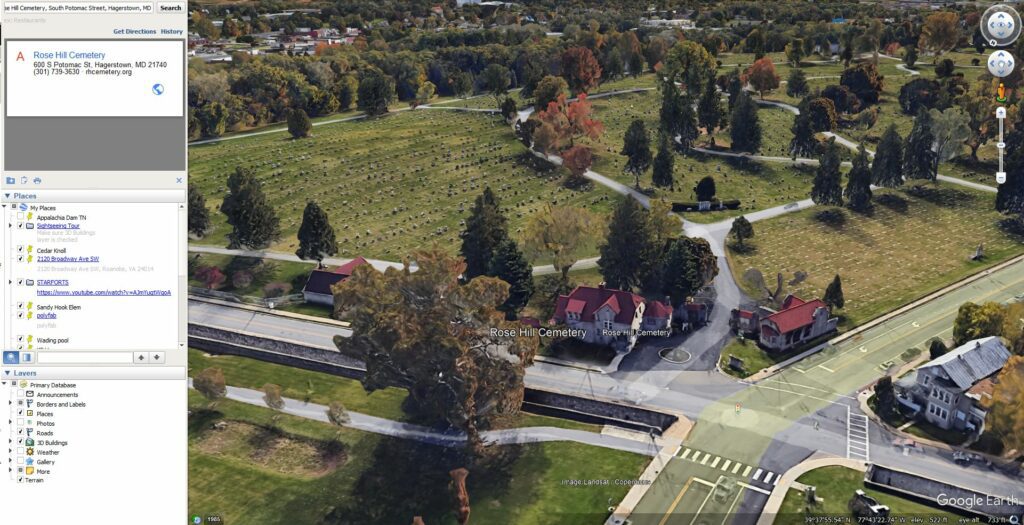
Haunting Encounters at Rose Hill Cemetery: A Paranormal Exploration
Nestled in the heart of Hagerstown, Maryland, Rose Hill Cemetery is more than just the oldest public cemetery in Washington County—it’s a place where history and mystery intertwine. Established in 1866 and spanning over 102 acres, this cemetery is the final resting place for more than 43,000 individuals. However, its storied past and eerie ambiance have made it a focal point for paranormal enthusiasts seeking to uncover its secrets.
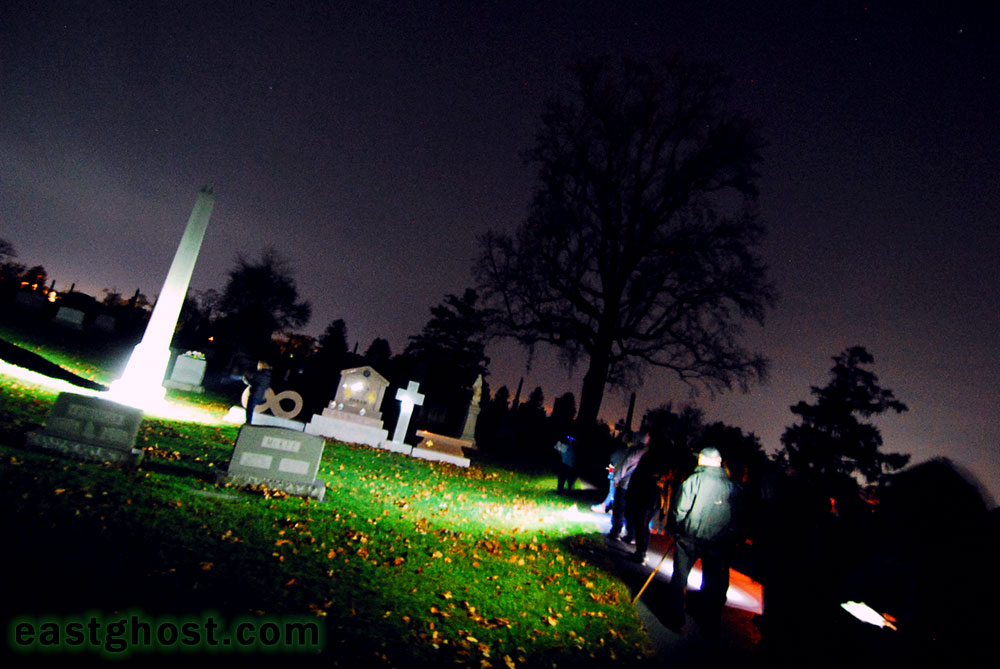
Ghostly Reports and Paranormal Activity
Rose Hill Cemetery has long been associated with ghostly tales and unexplained phenomena. Visitors have reported hearing chilling screams echoing through the grounds and catching the faint, acrid smell of burning hair near the crematorium. Shadowy figures, disembodied whispers, and inexplicable cold spots are just a few of the encounters that have left visitors questioning the nature of the unknown.
One particularly curious phenomenon often reported is the sudden “energy drain” of electronic devices. Paranormal investigators and casual visitors alike have experienced their cameras, phones, and other devices inexplicably losing power. This “power-suck” effect is theorized to be the work of spectral entities drawing energy to manifest themselves. But could it go beyond draining batteries?
BELOW: Bemusement, confusion, commotion immediately after the ominous silence was suddenly shattered by the tour-guide’s portable loudspeaker after it experienced a ‘power suck’ that disrupted its wireless link between speaker and microphone — it consequently blared out in its synthesized voice: “You have been disconnected!”
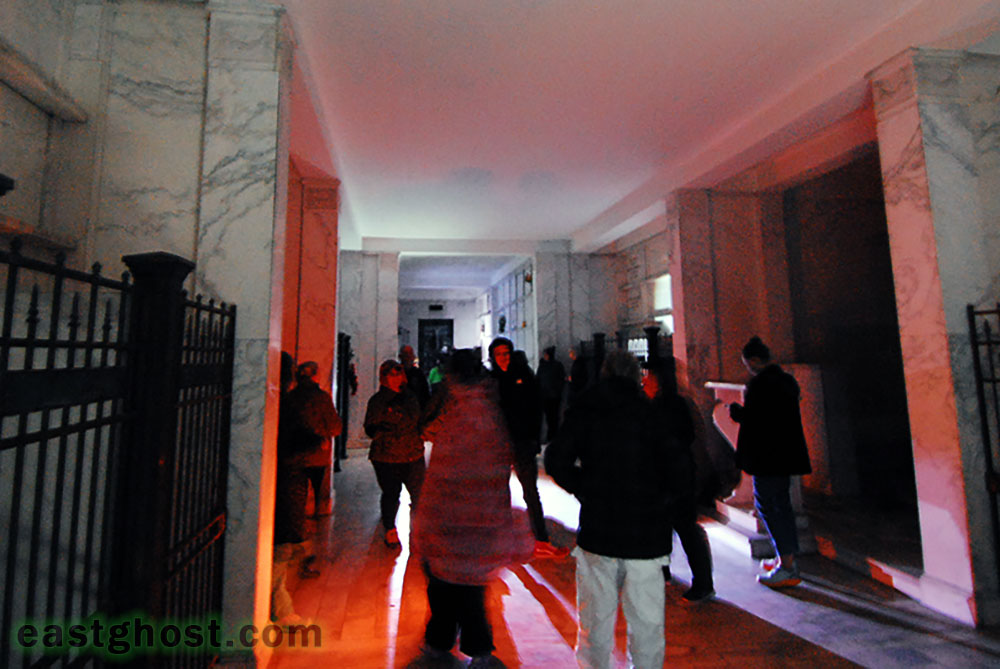
The Life-Force Connection
Some theories suggest that paranormal entities may feed on more than just electronic energy—they could be tapping into the life force, or chi, of the living. Visitors have reported feeling an overwhelming sense of fatigue, emotional heaviness, and even a profound sadness that lingers long after leaving the cemetery. This energy drain is not limited to humans; even flowers left on graves seem to wither unnaturally fast, as if the vitality is being consumed by unseen forces.
BELOW: Most attendees seemed to have promptly fled the mausoleum, not out of immediate, present danger but perhaps out of respect or maybe some kind of spiritual repulsion. Daytime visiting hours are the norm.
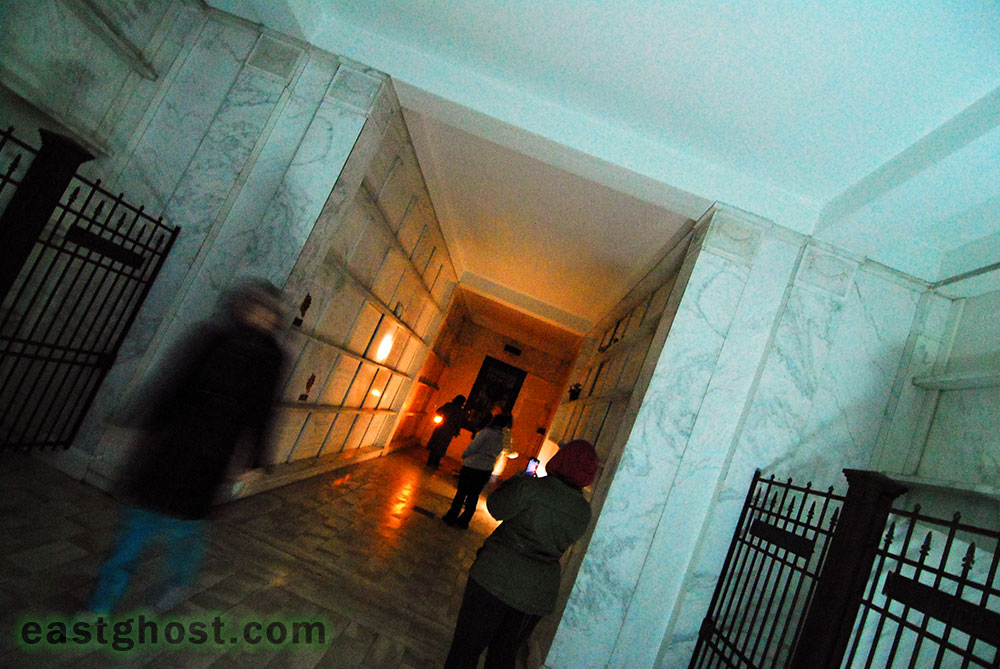
Mental and Physical Effects of Hauntings
The mental effects of these encounters can range from fleeting unease to lingering depression. Some individuals report feeling an inexplicable darkness settling over them, a psychological weight that defies logical explanation. Others describe vivid, unsettling dreams in the nights following their visit, filled with shadowy figures and haunting imagery.
Physically, visitors have recounted sudden chills, goosebumps, and a tangible coldness in certain areas of the cemetery, even on warm days. Some claim to feel a pressure on their chest or difficulty breathing, sensations often attributed to the presence of a spectral entity.
BELOW: Mighty doors.
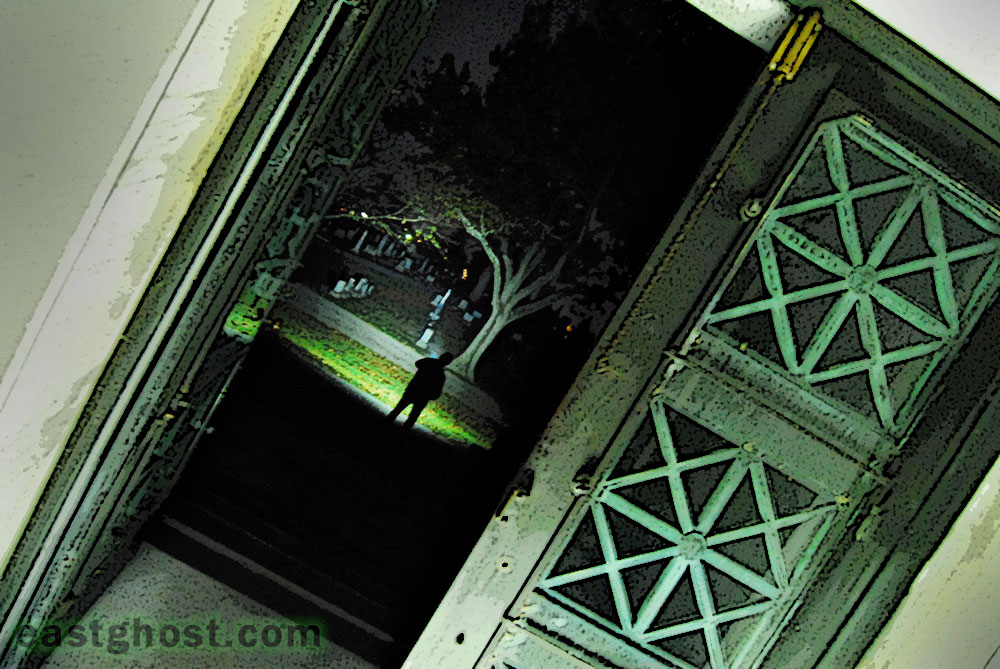
Exploring the Unknown
What causes these effects? Are they merely psychological responses to the eerie atmosphere of a historic cemetery, or is there something more profound at work? Paranormal investigators suggest that spectral entities may emit low-frequency energy waves, which can influence human perception and physical sensations. This could explain the feelings of coldness, depression, and unease often associated with haunted locations.
BELOW: Energy “orbs” or merely reflections of alighted dust? Note the whitish / greenish lichen that has over the past decade or two (since near-daily chemtrailing commenced all over the DC region) begun taking hold upon 100% of all area trees; whereas, prior to the late 1990s tree-moss was comparatively exceedingly rare.
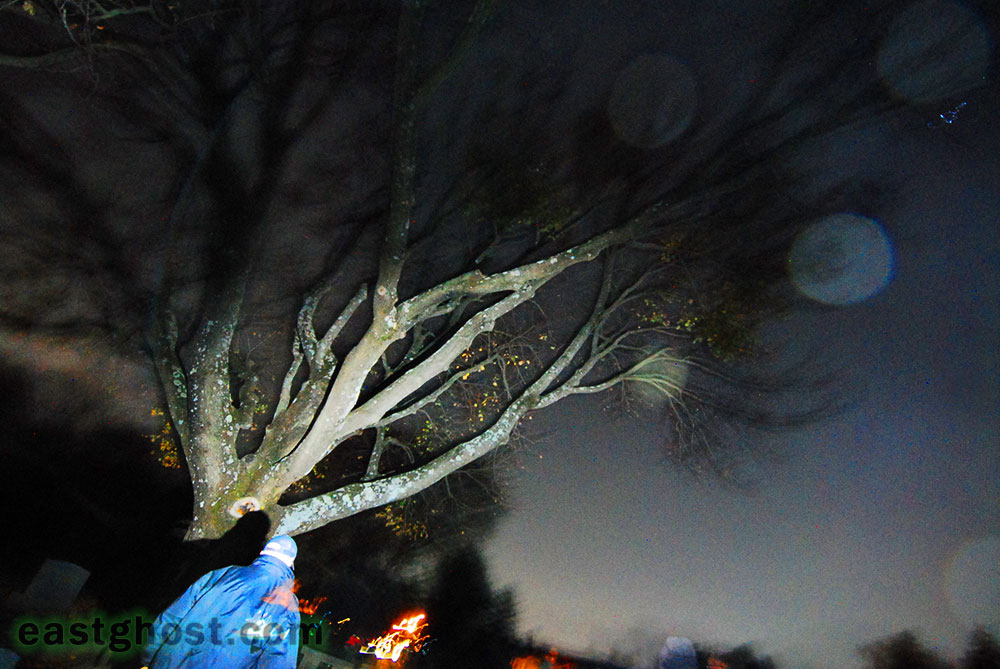
A Place of Reflection and Mystery
Despite its reputation for paranormal activity, Rose Hill Cemetery remains a place of beauty and reflection. Its rolling hills, historic monuments, and serene atmosphere provide a space to honor the past while contemplating the mysteries of life and death. Whether you’re drawn by its history or its haunted reputation, a visit to Rose Hill offers a unique experience that stays with you long after you leave.
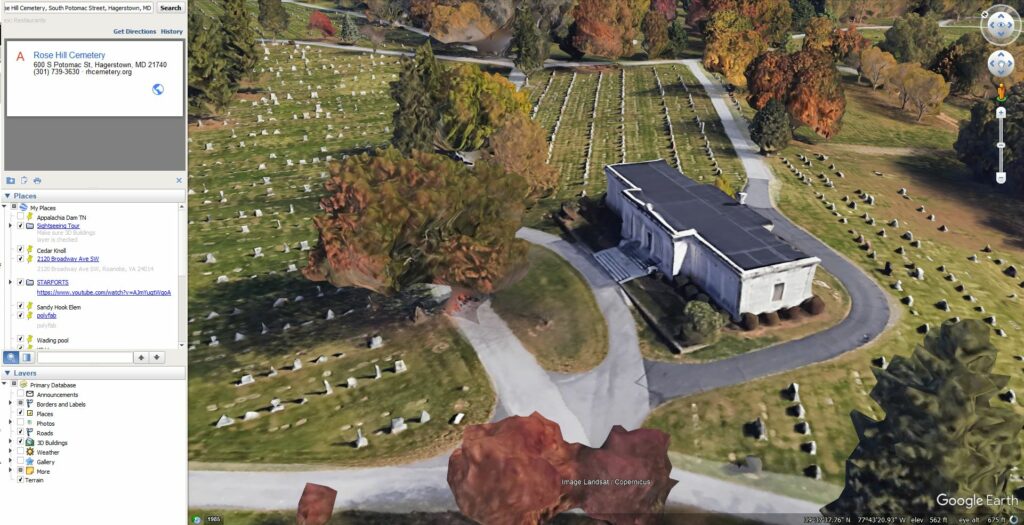
Conclusion
Rose Hill Cemetery stands as a testament to the intersection of history, life, and the unknown. For those intrigued by the paranormal, it offers a fascinating glimpse into the potential interactions between the living and the spectral. Whether you believe in ghosts or remain a skeptic, the stories and sensations of Rose Hill Cemetery invite us to ponder the mysteries of existence and the energy that connects us all.
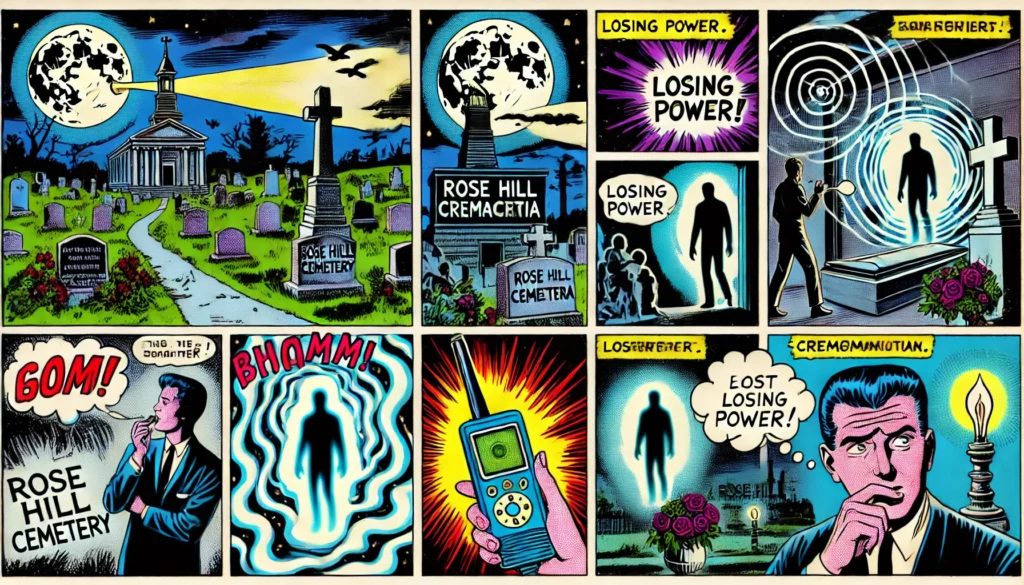
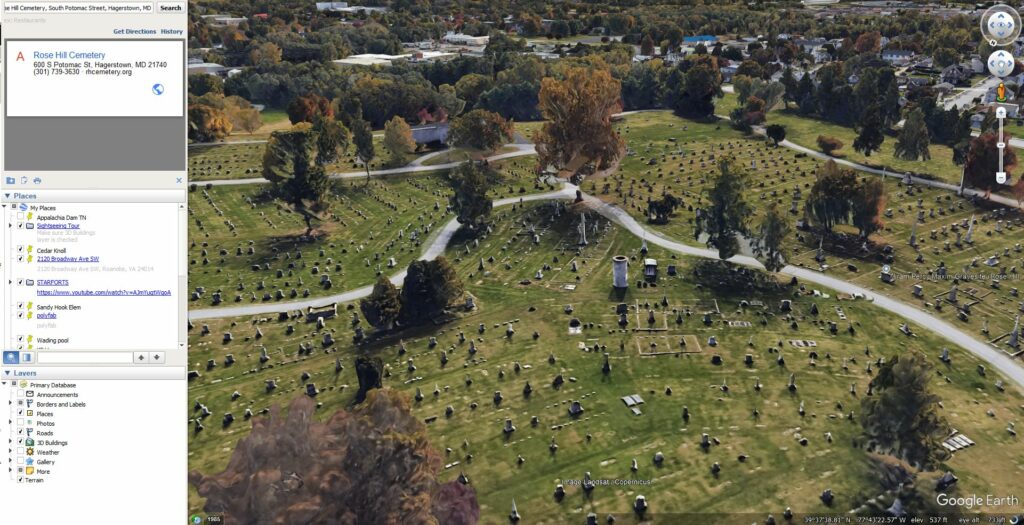
LICHEN
Lichens are fascinating organisms that represent a symbiotic partnership between two or more different species: a fungus (the mycobiont) and an alga and/or a cyanobacterium (the photobiont). Together, these partners form a unique composite organism that can thrive in diverse and often extreme environments. Here’s a breakdown of what makes lichens so special:
Structure
- Fungus (Mycobiont):
- Provides the structural framework and protection.
- Supplies a habitat for the photobiont, shielding it from environmental stresses like intense sunlight or desiccation.
- Alga/Cyanobacterium (Photobiont):
- Performs photosynthesis to produce energy-rich sugars, shared with the fungus.
- Cyanobacteria, if present, can also fix nitrogen, contributing additional nutrients to the lichen.
- Thallus (Body):
- The lichen body, or thallus, comes in various forms:
- Crustose: Thin and crust-like, tightly attached to surfaces.
- Foliose: Leaf-like and loosely attached.
- Fruticose: Shrub-like, branching, and often hanging or erect.
Function
Lichens are pioneers in colonizing habitats where few other organisms can survive, such as bare rocks, tree bark, or desert soils. They play essential ecological roles:
- Soil Formation: They break down rocks into soil through physical and chemical weathering.
- Nutrient Cycling: They contribute nitrogen and organic matter to ecosystems.
- Habitat Provision: They provide shelter and food for various microorganisms and small animals.
Adaptations
Lichens are incredibly resilient, with the ability to:
- Survive extreme temperatures and dehydration.
- Reactivate metabolic processes when water becomes available.
- Absorb nutrients directly from the air, which allows them to grow in nutrient-poor environments.
Ecological Indicators
Lichens are excellent bioindicators of air quality. Because they absorb nutrients directly from the air, they are highly sensitive to pollutants like sulfur dioxide. A decline in lichen diversity often signals environmental degradation.
Cultural and Practical Uses
- Dyes and Pigments: Used in traditional textiles and art.
- Medicine: Some lichens have antimicrobial properties.
- Food: Certain lichens are edible for humans and animals.
Lichens represent a beautiful collaboration between species, illustrating how different organisms can combine strengths to succeed in environments that would be hostile to each partner individually.
